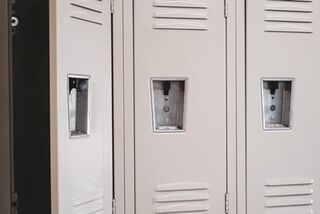Media
Create a Family Emergency Plan Today
Having difficult conversations can make your kids feel safer.
Posted July 26, 2022 Reviewed by Gary Drevitch

If there was an emergency, would you have a plan? What if there is a school shooting or a mass shooting at the local grocery store and you have no way to contact your children? The best way to protect your family is to have a safety plan.
Children feel better when they know they are emotionally and physically safe, but many families do not have a safety plan nor have they spoken directly about safety issues with their children. I hear a variety of excuses, like, “We are so busy,” “We just haven’t gotten around to it, though it’s on our to-do list,” or, “We have talked about what we would do if there was a flood or an earthquake.” The primary reason for putting off this discussion seems to be that parents are concerned that if they talk about scary things, they will frighten their kids.
Don’t be naive.
This generation of children has been exposed to a great deal of excessive content, often not appropriate for their age. This includes violent video games, overhearing parents listening to the news, images in the newspaper, or videos on social media sites. Consequently, many kids already live with a lot of fears, ranging from natural disasters to terrorist attacks, and of course, school shootings. Talking with them in a structured, forthright manner can only help. In fact, talking to them about a safety plan may be one of the most important discussions you have.
Putting Together Your Plan
Having a family safety plan begins with sitting down and holding a meeting. Come prepared with paper and pen to write down ideas. Set the goal that you will have a complete step-by-step guide for what each family member is to do in a variety of potential crisis situations. Also, specifically discuss what to do if an emergency happens during school hours, and go over school procedures in case of an emergency.
Here are some sample conversation starters:
- “We are going to talk about some things that may make you feel uncomfortable or even a bit scared. Hopefully, we will never have to use the information we are talking about, but we need to talk about it.”
- “You know how you have lockdown drills and fire drills at school? The principal and the teachers practice with you to make sure you are prepared in case of an emergency. We are going to do the same thing at home.”
- “What would you do if…?”
Create a list of questions for your kids to answer. Don’t make it scary; be matter-of-fact about knowing what to do based on the small possibility that something could happen.
Your family safety plan should be based on different scenarios, such as “What if mom and dad can’t get home from work before kids are home?” Ready.gov has created a complete set of instructions for parents to discuss with families, including elements of the plan below. Depending on the age of your children, decide which of the following components are appropriate:
- Set a general meeting place. Designate a general meeting place if one or more of you cannot make it home or to school.
- Create an emergency backpack. A great idea one mom shared with me was to have an “emergency backpack” ready in case of an unexpected event. In the backpack is a piece of paper with everyone’s contact information, insurance information, flashlight, protein bars, and assorted other things she thought her family may need.
- Set up an alert system. Set up a system that allows you to receive alerts and warnings from your local police on your phones. Go to your local police website or call them to find out how to set up receiving alerts on your electronic devices. FEMA has an Integrated Public Alert and Warning System (IPAWS). Learn more from FEMA here, and sign up to receive alerts.
- Compile a list of all emergency phone numbers. These should include parents’ work and cell numbers, as well as the cellphone numbers of each child. Write all the numbers on a piece of paper or print out from your computer in case you can’t access electronic devices. Also write down the numbers of friends and neighbors in case of emergency. Put all of these important papers in a safe place and make sure all family members know where it is. Share with your kids who is on the list and why they are included, then add the list to everyone's phones and email it to a trusted friend or family member not living in your home.
- Talk about what to do if there is a shooting in a nearby school or similar emergency. Initiate this conversation with your child in a calm manner. Plan so you know what your mission is and how you can get there. Leave time for your child to ask questions. Be patient and stay silent letting your child absorb the information and think about how they are feeling.
- Have a social media plan. If cell service is down, plan to go to Facebook, Snapchat, or Instagram for information. Social media sites can be very effective in times of crisis.
- Learn about what type of natural disasters may affect your community. Discuss this with your children in a matter-of-fact way. Come up with several plans for how you would evacuate if need be. Become familiar with shelters in your area. If you have a pet, check to see if they accept pets. Keep your fuel tank full, especially if a storm is headed your way.
Remember: The goal is to create open communication with your children about “scary” and uncomfortable conversations. Conveying that you are available to talk about uncomfortable feelings and thoughts is critical for helping your child feel safe and protected.
References
Kislin, Nancy. Lockdown: Talking to Your Kids About School Violence, 2019.


